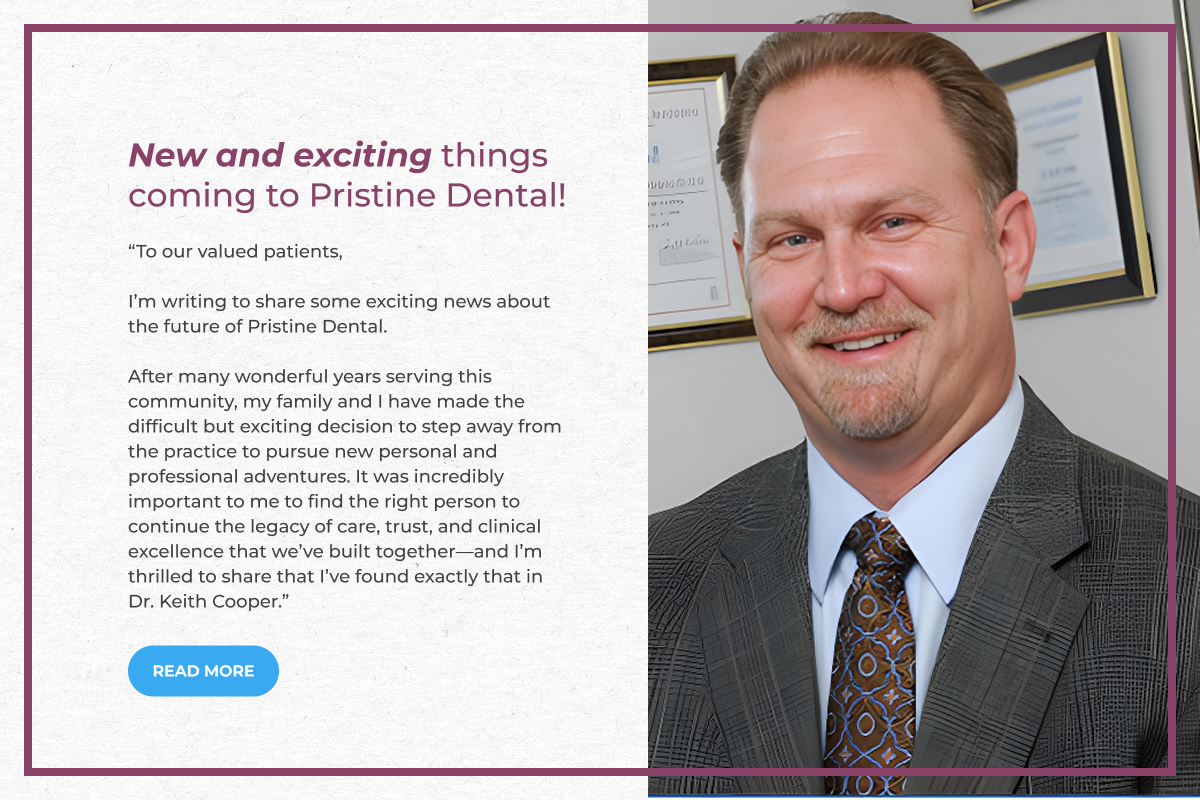Gum and Bone Grafting in Scottsdale, AZ
Visit Our Implant Dentist Today!
Sometimes you need supplemental treatments before beginning your dental implant treatment. You will need healthy jawbone density for your implant to heal and successfully integrate into your jaw.
In order for your jaw to maintain a healthy muscle tone, it needs continuous and regular stimulation. Jaw muscles are stimulated when you chew, speak, and swallow. Unfortunately, if you’ve suffered from tooth loss, you can lose the function to chew. This can lead to a lack of bone and muscle volume in the jaw.
If you’re looking for dental implants in Scottsdale, choose Dr. Cooper at Pristine Dental. To schedule a consultation, contact our dental office near you today at (480) 935-2424.
What Is Bone Grafting?
Bone grafts are a surgical procedure where a doctor affixes bone tissue to the section of your jawbone that lacks girth. Bone grafts are simple procedures that date back to ancient Egypt. With advancements in medicine and technology, there are three main types of bone graft treatments available:
- Autologous bone grafts: With this kind of graft, a doctor will take bone tissue from another part of your body, such as your chin, and use it to complete the graft. This is the preferred method of bone grafting.
- Allograft: Allografts are performed when a doctor uses a donated piece of bone tissue from special medical warehouses. This method is used if you don’t qualify for autologous bone grafts.
- Synthetic Tissue: If you’re not a candidate for the above methods, you might have your graft performed with an artificial bone made out of hydroxyapatite or other similar materials.
Bone grafting is relatively simple and can usually be done as an outpatient procedure with little pain or discomfort. It takes about 3-6 months for the donated bone to sufficiently fuse with your jawbone and create a firm foundation for your implants.
Will I Need a Bone Graft?
During your initial consultation with Dr. Cooper, he’ll perform a complete examination and x-rays to determine if you need a bone graft. The exam is easy, painless, and can be done in a simple appointment. Your dental implant success will depend on the health of your current teeth, face, and jawbone. Contact our dental office in Scottsdale today, so we can figure out what steps you’ll need to take to get your smile back.

